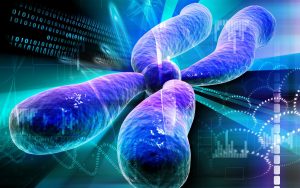Cancer is a genomic disease that co-opts normal cellular mechanisms to grow  and survive. One of these mechanisms is growth signaling. Cells turn on these signals when they are biologically necessary – for example, to heal a wound. Healthy cells turn these signals off when they are no longer needed.
and survive. One of these mechanisms is growth signaling. Cells turn on these signals when they are biologically necessary – for example, to heal a wound. Healthy cells turn these signals off when they are no longer needed.
Unfortunately, mutations in the genes that control these pathways can turn growth signals on and keep them on. Flooded with faulty messages, cells divide relentlessly, eventually forming a tumor.
Growth signaling is one of many pathways controlled by genes and, unfortunately, genes can be mutated. Cellular quality control mechanisms that safeguard DNA can also be altered. Once these are downgraded, more mutations can appear more rapidly. Other variations turn on genes that expel toxins from cells – this includes chemotherapy – or turn off genes that tell diseased cells to die, a mechanism called apoptosis.
Mutation is a random process. Some variations bring survival advantages to tumors, others may do nothing at all. However, as a result, each patient often has a unique set of variations that govern how their cancer grows and which treatments it will respond to.
Genetic testing for inherited cancer risk (also called germline testing) can determine if a patient has inherited a gene with specific changes that increases the likelihood of developing cancer.
Biomarker testing offers a blueprint of what’s going on in a tumor. Cutting-edge gene sequencing analysis (or comprehensive genomic analysis) can determine which tumor genes are mutated and how that might affect a patient’s prognosis and treatment options. Armed with this information, physicians and patients can make more informed choices based on the genomic landscape inside the tumor.

